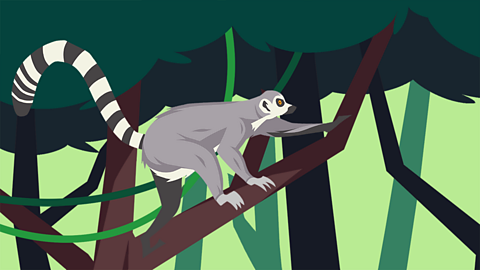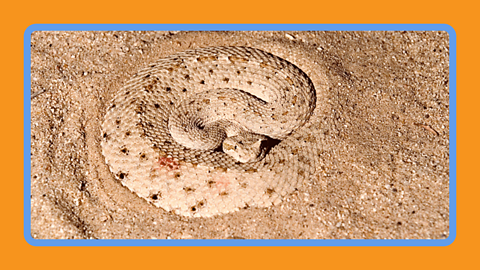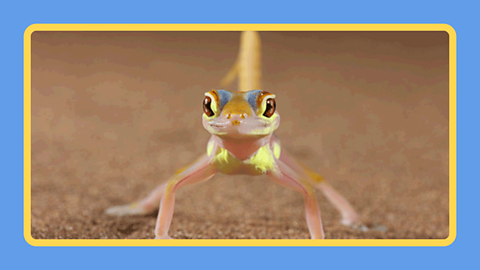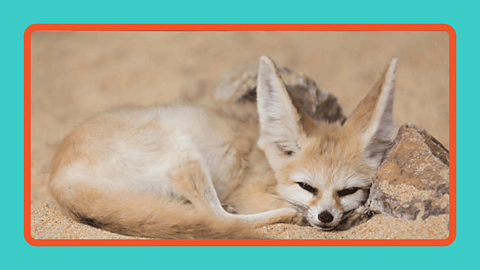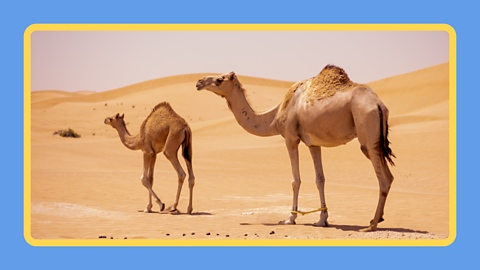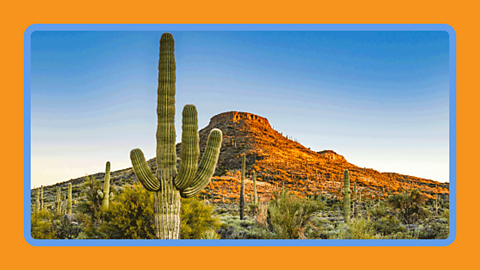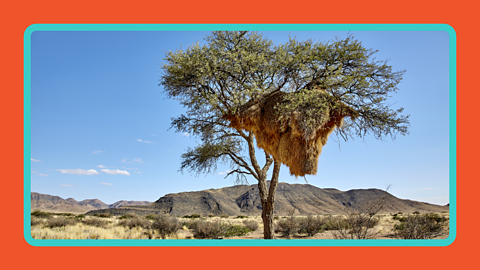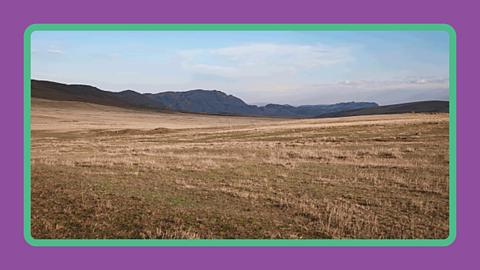Desert habitats
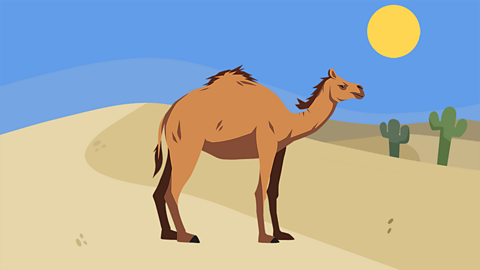
Desert habitats cover around one third (33%) of the Earth's surface.
Deserts are an area of land where it hardly ever rains. Some can be dry and very hot, but some can be very cold.
The Sahara desert is extremely hot during the day and cold at night but others, like the Gobi desert, can be a lot colder.
A hot desert is often covered in sand and the plants and animals that live there are adapted to live in very hot and dry conditions.
Animals don't choose their habitat because they are suited to it. Their adaptations (the features that make them suited to their environment) happen randomly. If these adaptations help an animal to survive then they are passed on to its children. This is called evolution.

Watch: What lives in a desert habitat?
Deserts can be arid, semi-arid, coastal and cold.
The Sahara is the world's largest hot desert, covering almost 8% of the Earth.
Discover what animals and plants are found in a desert habitat.
We are here.
But have you ever wondered what plants and animals live in a desert and how they survive there?
This is the Sahara. The largest desert on Earth!
Wow! It looks like it hardly ever rains here.
Incredibly, there are still plants growing here.
Like this acacia tree. It has long thorns that hold water. Plus very deep roots in the ground that gets the water it needs to survive.
And animals too! A camel. What's with the hump? It stores fat in that hump to use as food and can survive for up to seven months without drinking water! Ooh, it must get so thirsty!
Look at that gecko. They don't blink so have to lick their eyes to keep them clean.
And that's a scorpion. It can survive for twelve months without any food. It must be starving! Amazing!
So, desert habitats are dry and have very little water.
Ooh I'm thirsty, I need a drink!
Discover fascinating desert facts
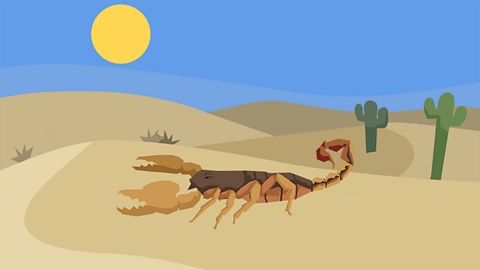
- Deserts receive less than 5% of the Earth's annual rainfall.
- Desertification happens when fertile land turns into desert.
- Cacti have thick, waxy skin to trap water within the plant.
- Camels store fat within their hump, not water, which helps them to survive when food is scarce.
- There is a desert on every continent in the world.
- Joshua trees grow in the deserts of USA and Mexico. They often live to between 150 and 300 but can sometimes live up to 1000 years!

What is a desert habitat like?
Deserts are extremely hot places and the hottest deserts are located near the equator. The temperature can get so hot during the day that many creatures hide underground in the hottest part of the day. At night the temperature drops because the sun is no longer heating up the ground and it gets very cold.
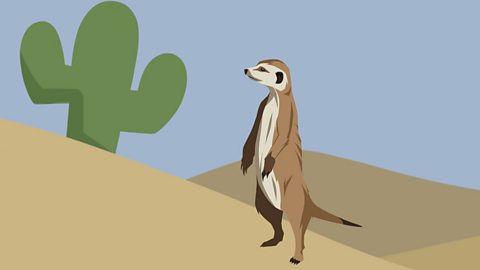
Deserts are very large, open and empty places with hardly any buildings because conditions make it difficult for humans to live there.
If you stood in a desert, you would be able to see a very long way into the distance because there aren't many plants. The plants that do live in deserts have adaptations to survive in the hot and dry climate.
Desert habitats receive hardly any rain at all so they are very dry places. This means there aren't any rivers or ponds or even puddles. Because the air is so dry, when it rains lightly, sometimes the water doesn't even manage to reach the ground.

Deserts can be very windy places because there are very few plants or structures to block the wind when it blows. The wind moves the sand which causes wave like patterns on the ground. Sometimes the wind can be so strong it may cause sandstorms, where large amounts of sand is picked up, lifted high into the air and carried a very long way.
What animals live in a desert?
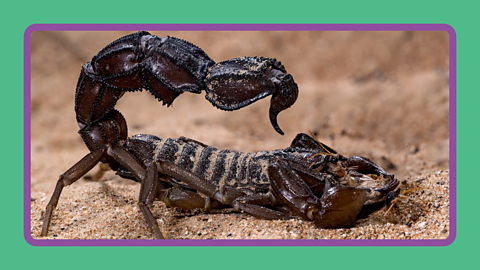
Image caption, Scorpions
Scorpions have eight legs, with two large pincers at the front of their body and a large curved tail at the back that they use to sting. They have a hard covering all over their body called an exoskeleton which is usually brown colour in the desert to help them blend in. They hide in caves during the day to keep cool and use their pincers to catch insects to eat. Some scorpions can live for up to a year without eating!
1 of 6
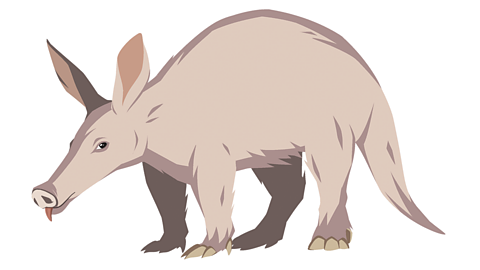
Did you know?
Aardvarks are a species of mammal that live under the ground in burrows.
They live in hot dry places like the Kalahari desert in Africa.
Aardvarks are nocturnal, meaning they come out to feed at night. They use their long snouts to sniff out food, such as ants and termites.

What plants live in the desert?
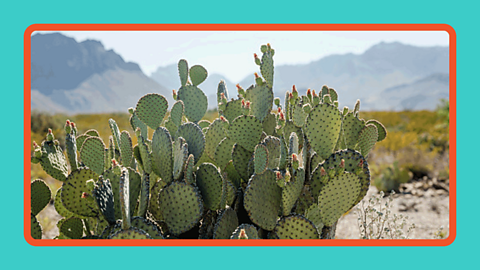
Image caption, Prickly pear cactus
The prickly pear cactus is made up of lots of round leaf-type pads joined together like branches. The round leaves are thick, green and covered in sharp spines. It produces flowers that can be pink or yellow. The prickly pear survives in the desert because it can store water in its thick leaves. Its roots don't grow very deep into the ground, so that it can reach even the smallest amount of rain that falls.
1 of 5
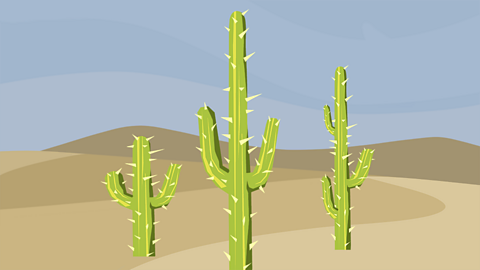
Did you know?
The saguaro cactus is the largest cactus found in the USA. They can live for over two hundred years.
They grow very slowly, and it can take ten years for a saguaro cactus to reach just a few centimetres in height.
The tallest saguaro ever measured was over twenty metres tall.


Important words
Adaptation – The way that animals change to suit different conditions.
Air – All animals need air to breathe.
Arid – Very dry conditions with a little amount of rain or water.
Evolution – The way that animals can develop small differences over time.
Food – The things an animal or plant eats and takes nutrition from.
Desert habitat – Where an animal or plant lives in the hot and sandy desert landscape.
Shelter – Where an animal finds protection from predators.
Water – All animals need to drink or take in water to survive.

Activities
Activity 1 – Find the desert animals
Activity 2 – Desert habitats quiz
Activity 3 – Sort the desert animals
Easter Holidays Activity Pack activity
Check out some Easter inspired activities to complete in the Easter Holidays, for KS1.

More on Living things and their habitats
Find out more by working through a topic
- count5 of 11
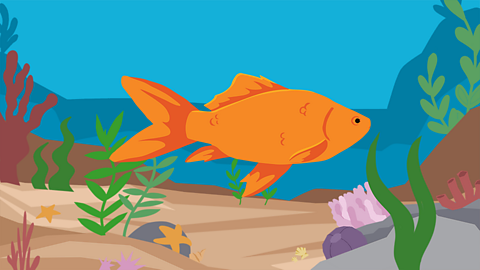
- count6 of 11

- count7 of 11
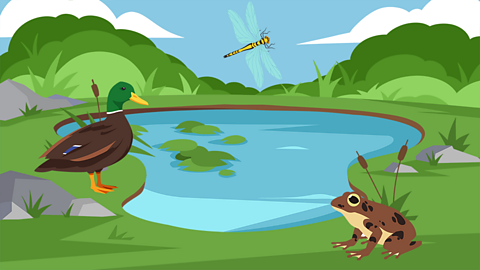
- count8 of 11
